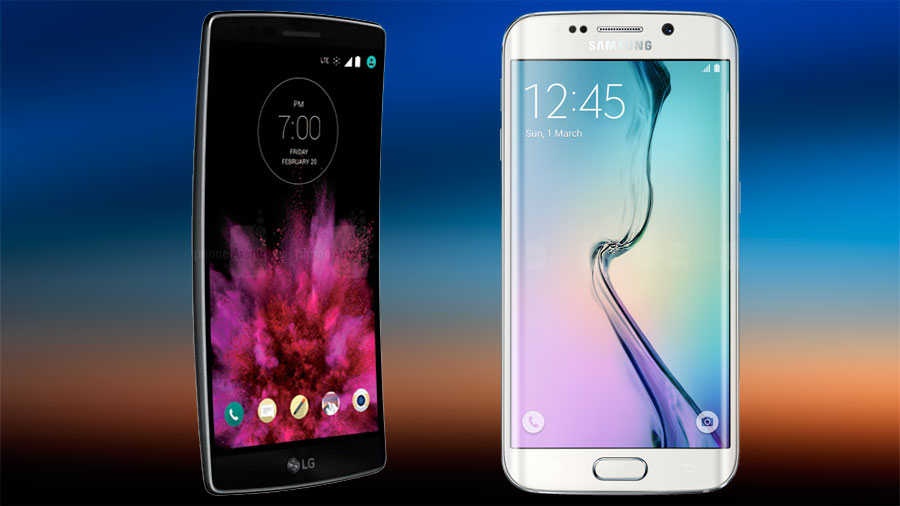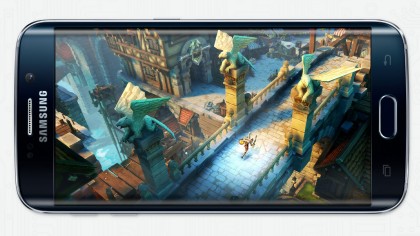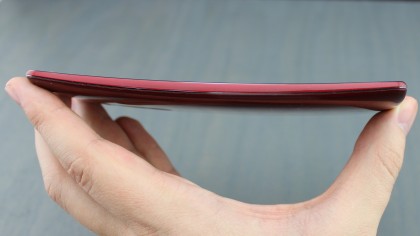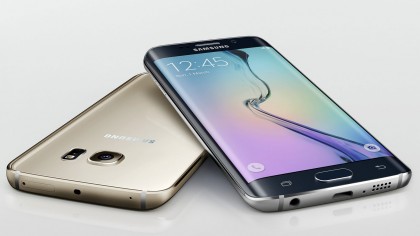Samsung Galaxy S6 Edge vs LG G Flex 2
Sleek curves compete with flexible fashion

Smartphones have reached the point where designs are more iterative than innovative. While the look and feel changes only slightly on new models each year, manufacturers haven't done much to wow consumers beyond the traditional rectangular slab of glass, metal and plastic.
LG attempted to shake things up last year with first G Flex, a 6-inch smartphone with a curved display and slightly flexible frame, and Samsung soon followed with their own take on this concept, courtesy of the Galaxy Note Edge, a phablet-sized model featuring a display that wraps around the right side.
These Korean tech titans wasted no time announcing all-new versions of these devices for 2015, and we sat down with both in an effort to determine whether curved and flexible displays actually enhance the experience or are little more than a marketing gimmick.

Screen
Although it won't hit stores until April 10 (with preorders now available in 20 countries), the Samsung Galaxy S6 Edge is little more than a variant of this year's Samsung Galaxy S6, featuring nearly identical specs with one notable exception: The Edge's display gently wraps around both sides of the front.
Otherwise, the Galaxy S6 Edge offers the same 5.1-inch Quad HD Super AMOLED display as its less curvaceous sibling, with a resolution of 2560 x 1440 that packs in a whopping 577ppi.
The new LG G Flex 2 one-ups Samsung's latest with a 5.5-inch Full HD P-OLED display which curves slightly from top to bottom, and like its predecessor, can handle a bit of bending without breaking.
Despite the larger screen, the G Flex 2 tops out at a resolution of 1920 x 1080 with a pixel density of only 403ppi, but LG attempts to make up for this shortcoming by comparing the curved display to its high-end televisions, offering a more cinematic viewing experience in landscape mode with three modes (Standard, Vivid or Natural) to make any content look great.
Sign up for breaking news, reviews, opinion, top tech deals, and more.

Design
Weighing only 4.66 ounces (132 grams), Samsung's curved Galaxy S6 Edge offers a premium feel that's slightly less ergonomic along the edges, but the aluminum frame and 7mm thickness make the device feel lighter than the Galaxy S6.
Roughly the size of an iPhone 6, Samsung borrowed a somewhat annoying trait from Apple's latest flagship handset: The rear camera protrudes from the back ever so slightly, presumably a design compromise to keep the device slim and trim.
Instead of curving around the edges, LG's G Flex 2 bends the entire case inward vertically, and because of the larger display size, its contoured body weighs slightly more at 5.36 ounces (152 grams) with a 5.87 x 2.96 x 0.37-inch (149.1 x 75.3 x 9.4mm) frame.

Processor and Storage
Just because it looks so nice on the outside, that's no reason to be a slouch when it comes to what's on the inside.
The Samsung Galaxy S6 Edge obliges with an octa-core, 64-bit Exynos 7 Octa 7420 processor clocked at 2.1GHz capped off by a Mali-T760 MP8 GPU and a whopping 3GB RAM and up to 128GB of storage for good measure.
LG mostly made up for the lack of oomph on the first G Flex by slapping an octa-core, 64-bit Qualcomm Snapdragon 810 processor into the sequel, clocked at 2.0GHz with Adreno 430 GPU and the same 3GB RAM.
Unfortunately, the built-in storage on the G Flex 2 maxes out at 32GB, but up to a totally insane 2TB of additional storage is available from an optional microSD card – a feature sadly lacking on the otherwise hardware-rich Galaxy S6 Edge.